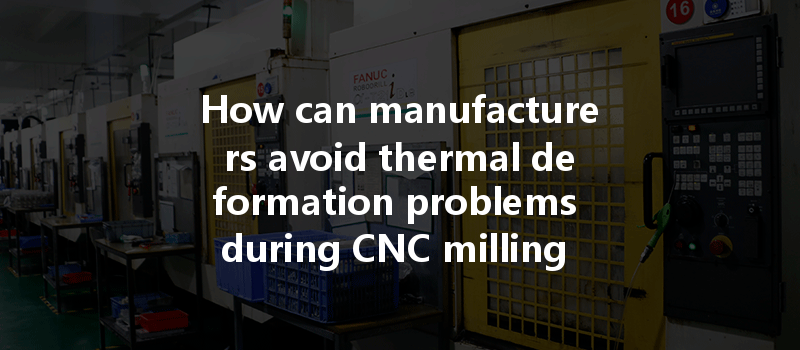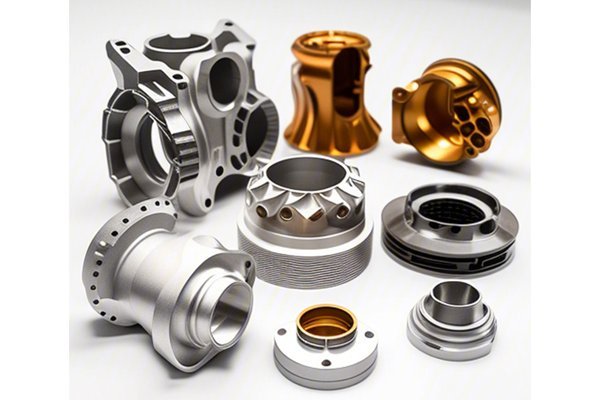Did you know that nearly 70% of machining issues in CNC milling are related to thermal deformation? This surprising statistic highlights a critical aspect of manufacturing that can significantly impact product quality, precision, and operational efficiency. With the growing demand for precision engineering across various industries, understanding how to manage thermal effects during CNC milling has never been more essential.
In this comprehensive blog, we will explore the intricate world of thermal deformation in CNC milling, delve into the factors contributing to this phenomenon, and offer practical, detailed solutions that can help manufacturers mitigate these issues. By the end of this article, you will possess a thorough understanding of thermal deformation, its impacts, and effective strategies to avoid it, ensuring superior quality in your machining processes.
What is Thermal Deformation?
Thermal deformation occurs when a material expands or contracts due to temperature fluctuations. In CNC milling, this is a critical issue, as changes in temperature can lead to inaccuracies in machining. When a cutting tool presses against a workpiece, heat is generated due to friction. As the temperature rises, materials can expand, leading to misalignments and variances in dimensions, ultimately affecting the finished product’s quality.
Causes of Thermal Deformation in CNC Milling
Solutions to Avoid Thermal Deformation
Choosing the right material is crucial. For projects sensitive to thermal deformation, materials with lower thermal expansion coefficients are preferable. Additionally, pre-treating materials by stabilizing their temperature before machining can also alleviate some thermal expansion issues.
Finding the optimal cutting speed and feed rate is vital for managing heat. Slow and steady approaches, which might initially seem less efficient, often yield higher accuracy for precision components. Use machining tests to identify the optimal parameters based on specific materials and shapes.
Utilizing coolant fluids during the CNC milling process can substantially reduce heat generation. Consider the following cooling methods:

Select cutting tools made from advanced materials such as carbide or ceramic, which can withstand higher temperatures without deforming. Furthermore, high-speed steel tools coated with materials like titanium nitride can reduce friction and heat generation, extending tool life and maintaining machining precision.
The design of CNC tools should also prioritize thermal management. Tool geometries that promote chip removal can help keep machining areas cooler. Additionally, using tools with coatings that reflect heat can further enhance the heat management of cutting processes.
Routine maintenance ensures that machines operate under optimal conditions. This includes checking alignment, replacing worn parts, and ensuring coolant systems are functioning effectively. A well-maintained CNC machine minimizes deviations resulting from thermal deformation.
Properly securing the workpiece can prevent movement during the milling process, providing consistency. Employing a temperature-controlled fixturing system can further stabilize the workpiece temperature, reducing thermal deformation risks.
Integrating temperature sensors into CNC milling operations provides real-time monitoring. These systems can alert operators when temperatures exceed predefined limits, allowing for immediate adjustments to maintain precision.
Practical Examples of Solutions in Action
In the aerospace industry, thermal precision is paramount due to stringent safety standards. One manufacturer adopted mist cooling and optimized cutting parameters, reducing thermal deformation by 30%. This adjustment enabled them to achieve tighter tolerances necessary for high-performance aircraft parts.
A company producing medical devices experienced frequent quality issues relating to thermal deformation in a stainless steel part. They implemented cryogenic cooling and upgraded to carbide tools. The result? A 40% increase in part accuracy and a significant reduction in production time.
In CNC milling, thermal deformation can lead to significant quality issues and operational inefficiencies. However, by understanding its causes and implementing the solutions outlined in this blog, manufacturers can effectively mitigate these problems. From material selection and effective cutting strategies to advanced cooling techniques and regular maintenance, proactive measures can dramatically improve machining precision, ensuring that both deadlines and quality standards are consistently met.
Thermal deformation is not just a minor annoyance; it’s an aspect of machining that can dictate the success of a project. Manufacturers must prioritize managing these thermal effects to maintain competitiveness in an increasingly demanding market. The insights shared in this blog serve as a roadmap for ensuring excellence in precision CNC milling—an investment worth pursuing for sophisticated, quality-driven manufacturing. As you reflect on the methodologies discussed, consider how you can incorporate these strategies into your operations to enhance workflow efficiency, product quality, and ultimately, your bottom line.






